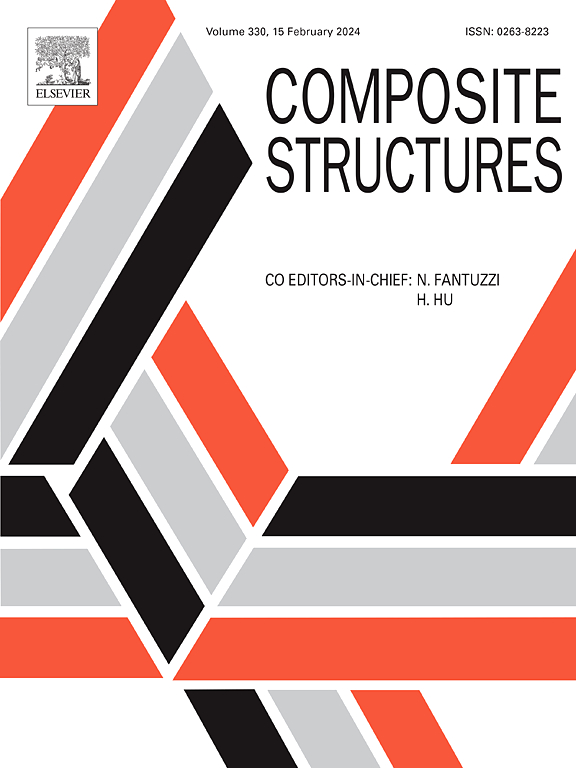Time-domain topology optimization of viscoelastic composites for enhanced energy dissipation in macrostructures
IF 6.3
2区 材料科学
Q1 MATERIALS SCIENCE, COMPOSITES
引用次数: 0
Abstract
This paper proposes a time-domain topology optimization method aimed at maximizing the energy-dissipation performance of viscoelastic composite materials while maintaining their structural stiffness. Viscoelastic materials are widely used for vibration damping in various engineering fields. However, materials with high damping characteristics typically exhibit low stiffness. To overcome this limitation and enhance the damping performance, a composite material that combines high-stiffness materials with viscoelastic materials, was designed. A time-domain topology optimization approach was employed to account for the interaction between the microstructural design of viscoelastic composites and the macroscopic structural behavior under time-dependent loading. This approach enabled the design of optimal microstructures tailored to specific macroscopic structural responses. The effective properties of the composites were determined based on the homogenization theory, and a systematic optimization framework was developed to achieve a balance between energy dissipation and stiffness in the macrostructures. The proposed method was validated through numerical examples, demonstrating the effectiveness of the optimal designs for enhancing the damping performance of viscoelastic composites.
粘弹性复合材料增强宏观结构能量耗散的时域拓扑优化
本文提出了一种粘弹性复合材料在保持结构刚度的同时,使其耗能性能最大化的时域拓扑优化方法。粘弹性材料广泛应用于各种工程领域的减振。然而,具有高阻尼特性的材料通常具有低刚度。为了克服这一限制,提高阻尼性能,设计了一种高刚度材料与粘弹性材料相结合的复合材料。采用时域拓扑优化方法对粘弹性复合材料的微观结构设计与宏观结构在时间载荷作用下的相互作用进行了分析。这种方法能够设计出适合特定宏观结构响应的最佳微观结构。基于均匀化理论确定了复合材料的有效性能,并建立了系统的优化框架,以实现宏观结构中能量耗散和刚度的平衡。通过数值算例验证了该方法的有效性,验证了优化设计对提高粘弹性复合材料阻尼性能的有效性。
本文章由计算机程序翻译,如有差异,请以英文原文为准。
求助全文
约1分钟内获得全文
求助全文
来源期刊

Composite Structures
工程技术-材料科学:复合
CiteScore
12.00
自引率
12.70%
发文量
1246
审稿时长
78 days
期刊介绍:
The past few decades have seen outstanding advances in the use of composite materials in structural applications. There can be little doubt that, within engineering circles, composites have revolutionised traditional design concepts and made possible an unparalleled range of new and exciting possibilities as viable materials for construction. Composite Structures, an International Journal, disseminates knowledge between users, manufacturers, designers and researchers involved in structures or structural components manufactured using composite materials.
The journal publishes papers which contribute to knowledge in the use of composite materials in engineering structures. Papers deal with design, research and development studies, experimental investigations, theoretical analysis and fabrication techniques relevant to the application of composites in load-bearing components for assemblies, ranging from individual components such as plates and shells to complete composite structures.
 求助内容:
求助内容: 应助结果提醒方式:
应助结果提醒方式:


